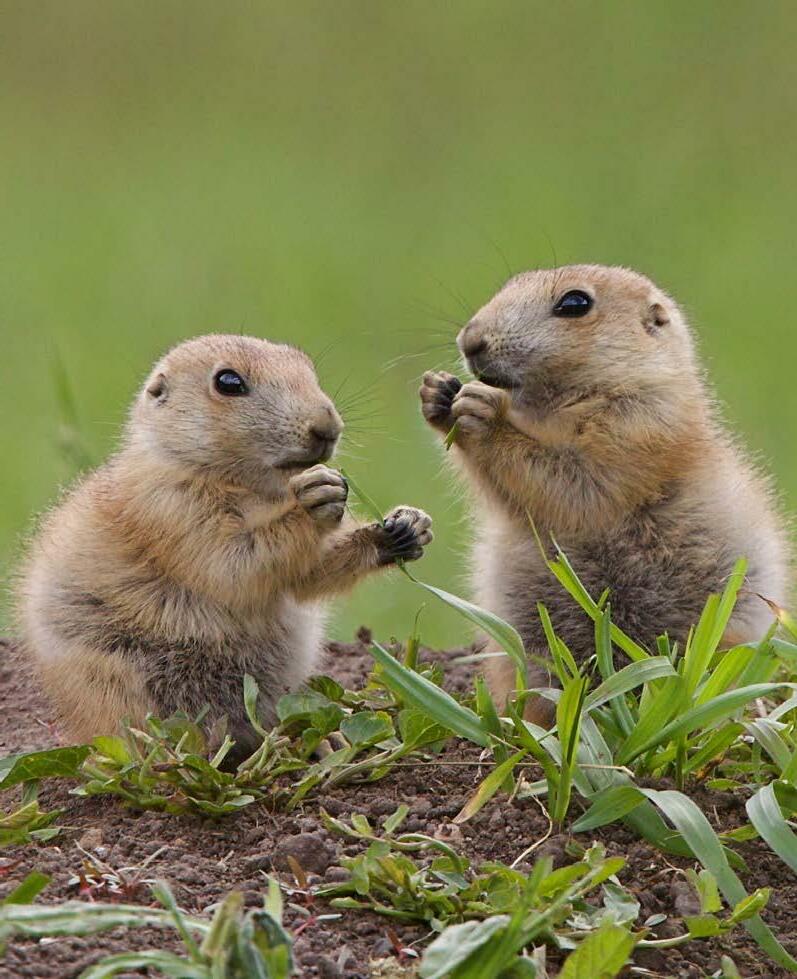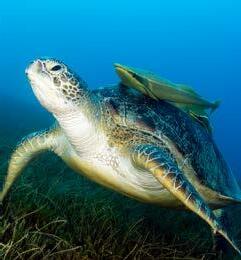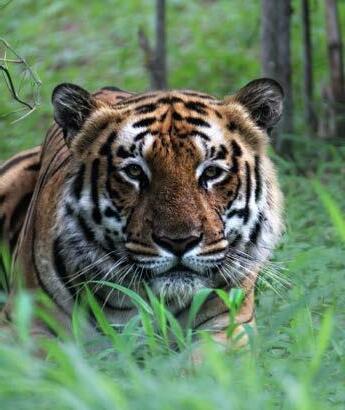






















Bald eagles like me come from and live only in North America. We were chosen by the Founding Fathers to be the symbol of the United States – perhaps because of our fierce beauty and proud independence...
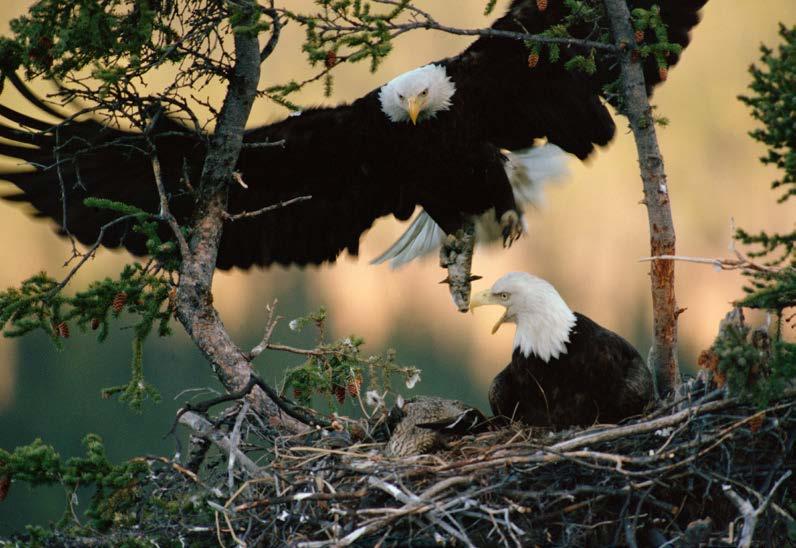
Basically, we’re awesome.
And most importantly, we’re the Biggest Nest Builders. EVER.
We build our eyries – that’s a fancy word for nest – to last. That’s because we return to them year after year. Each year, we add another few twigs, branches and whatever we can get our beaks on. We gather all kinds of lovely soft moss and grasses for the inside before my partner, Betty, lays the eggs.
This annual expansion means we build some pretty epic nests.
I say “we build” because Betty and I are partners every flap of the way…
(Here’s Betty flying back to the nest –no, that’s not just the photo, she really is bigger than me. When it comes to bald eagles, the ladies are large.)
Remember, it’s important to choose your nesting spot wisely. A broad, strong tree near water is good – great local fish supply and so on. But the tree MUST be mighty…
My cousin Ian from Florida holds the record for the biggest bald eagle nest in the whole of the USA. Almost three metres wide and six metres deep, weighing a whopping three tons Wowser!
You’re gonna need a VERY big tree to hold a nest THAT size!
Betty’s calling – better fly!
Ian xx
By Gabby Dawnay © Minden Pictures /Alamy Stock PhotoCould you build your own home? Birds do. You must have seen them out looking for twigs, leaves and mud clumps to build their nests with. It doesn’t look too hard a job, does it?
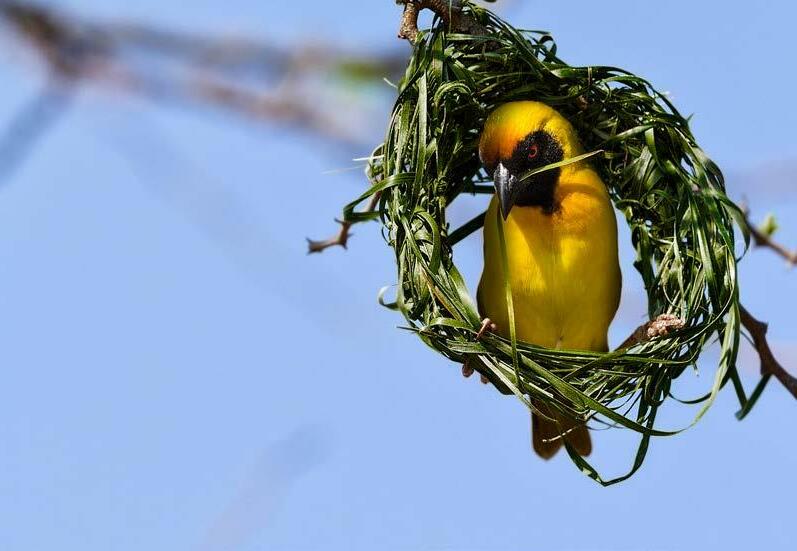
But what if you had to carry several thousand pieces of stone, some almost as big as your head, in your mouth, for up to 23 metres? And in fast-flowing water?
Some fish build nests, too –and every spring in North America, male bluehead chubs build domeshaped mounds of gravel this way. These nests are for mating in. They attract females who think they’re a safe place to release and hide eggs.
Over 20 species of colourful minnows agree – they borrow the nests for the same thing!
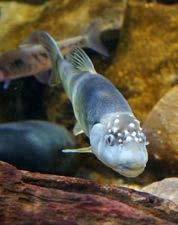
Goliath frogs – the world’s largest frogs –go one better. They build their own ponds! They dig small ones, then carry lots of

stones – weighing up to two-thirds their own weight – to surround them. Some experts think it could be how they got so big. Heavy stone lifting may be the frog version of bodybuilding!
These central African frogs are good housekeepers, too, clearing the ponds of leaves and other litter. They do it all to give their kids a safe home. It can get crowded, though – some ponds have nearly 3,000 eggs inside!
Giant male African bullfrogs sometimes find their pools drying up. If so, they can build channels several metres long to guide their tadpoles into new pools! Had you ever guessed that frogs could be such brilliant builders (and parents)?
We’re not the only species with construction skills. Let’s meet some… © Tim Plowden/Alamy Stock PhotoI’M PRETENDING TO BE AN ALLIGATOR!
Many spiders are great builders, too, able to spin amazing new webs quickly. The diving bell spider is different from most – it lives underwater, despite being an air-breather. It spins a dome-shaped web between underwater plants. Then it traps air bubbles from the surface in its body hairs and uses them to fill the web with air – until it’s created a bubble big enough to live in!
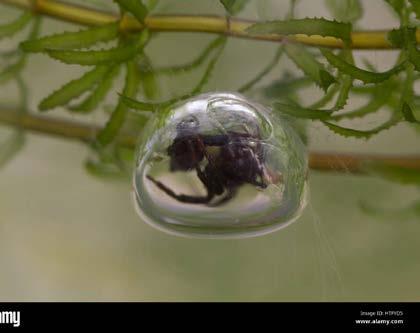
Have you ever wondered
build webs across wide gaps? Wonder no more! They spin a long, dangly piece of spider silk, then the breeze pulls it to another point, where it sticks. Result: a handy bridge for the spider to cross!
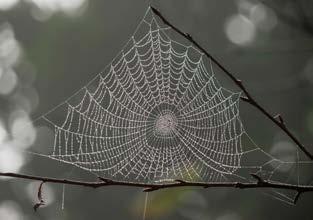
Beavers’ dams in rivers may look messy and random – but beavers are smarter than that. They blend wood, mud, stones and plants because the mix of materials makes the dams stronger.
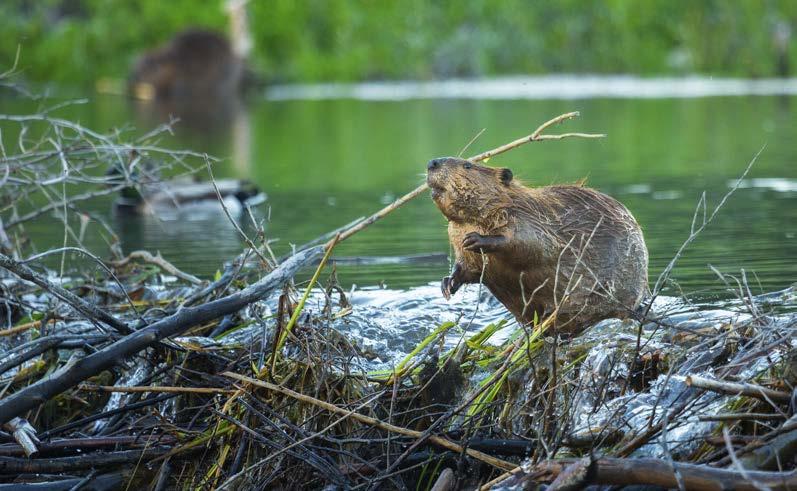
Of the 50,000 species of spiders we know of, web-building is the only thing they all have in common. Find the answer below.
They dam rivers to stop their flow and collect water, creating their own ponds. That’s where they build their homes, which have secret underwater entrances. But be warned: if one invites you around for dinner, they’re more likely to serve you wood chips than potato chips!
False. Most don’t spin webs at all – but
all produce silk.
how spiders
No, it’s a house. Sand mason worms ooze slimy mucus and stick sand grains and shell fragments together underwater to build these tubes to live in. That branchy bit at the top is a crown of tentacles used for catching food. Most of the tubes are buried in the sand, but the top bits stick out at low tide on UK beaches. When the tide’s in, they look like mini underwater forests!
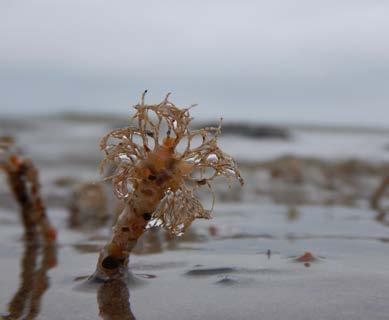








Now imagine having to build a network of tunnels with lots of rooms in total darkness and no leader explaining how. That’s what ants do, hollowing the soil out grain by grain with their mandibles (a pair of mouthparts they use like hands).















But ants don’t just build nests. A species of army ants, found in parts of America, creates living bridges – with their own bodies! They form them across small gaps in the forest floor when they’re out raiding. It helps their swarms get about faster. Not only do they have no leader, but they’re almost blind, too, using scent and touch to find their way.
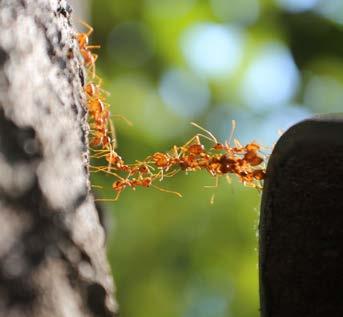
Meanwhile, millions of teeny termites work together to build huge mounds all around Australia and other countries. They’re made of soil, spit and poo, and can be eight metres tall – or even higher. We wondered what secrets they held, so we sent Rhona and Rusty to explore…

Yes, tiny termites built these whoppers!
 What’s this on the beach? A sand tree?
Black garden ant nests do have tidy indoor toilet areas
BUT WHERE’S THE TOILET?
What’s this on the beach? A sand tree?
Black garden ant nests do have tidy indoor toilet areas
BUT WHERE’S THE TOILET?
Rhona: It’s a good thing we got sprayed with termite scent, Rusty.
Rusty: Yes, these termites don’t suspect a thing!
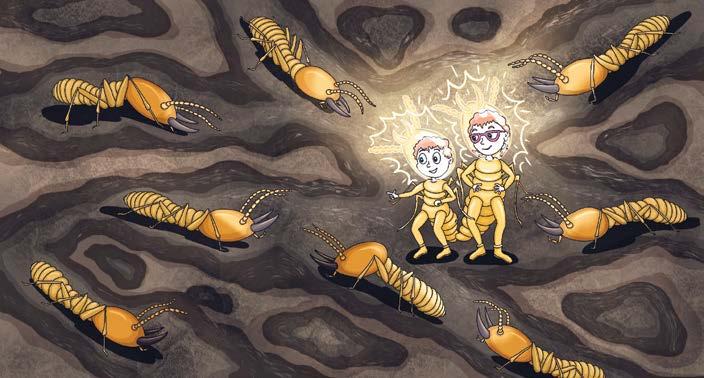
Rhona: There are so many shafts and tunnels to explore.
Rusty: I like it here. The air is as cool as me!
Rhona: Remember that chimney and ventilation shaft we found at the top?
Those and the tunnels seem to control the climate.
Rusty: So, the workers know what they’re doing when they build them?
Rhona: They’re smarter than they look –and did you know they’re all blind?
Rusty: Maybe we don’t need these itchy costumes, then.
Rhona: Better not take any risks. We’re back near the nest at the bottom now, where they all live.
Rusty: Their hidden underground city!
Rhona: Yes, where we found their fungus gardens. They were farming it to eat.
Rusty: It didn’t look tasty to me!
Rhona: What did you see when we got separated?
Rusty: I walked into a cool cellar and nearly fell into a well.
Rhona: I found some food stores – but I told you to stick by me.
Rusty: I wanted to find the royal chambers.
Rhona: Better not risk that. The queen will be busy laying oodles of eggs.
Rusty: You know, I think these termites are getting suspicious.
Rhona: I agree – let’s get out of here!
Rusty: ♫ Scaredy-cat Rhona. ♫ Hey, WAIT FOR ME!
More amazing builders coming up…
Rhona and Rusty have a shrinking superpower, so they shrank to a tiny size to explore inside a termite mound for…It’s me, Charlie, the Eco Kid who can chat with animals. This time I’m meeting a red-haired ape with long arms – who often eats with his feet!
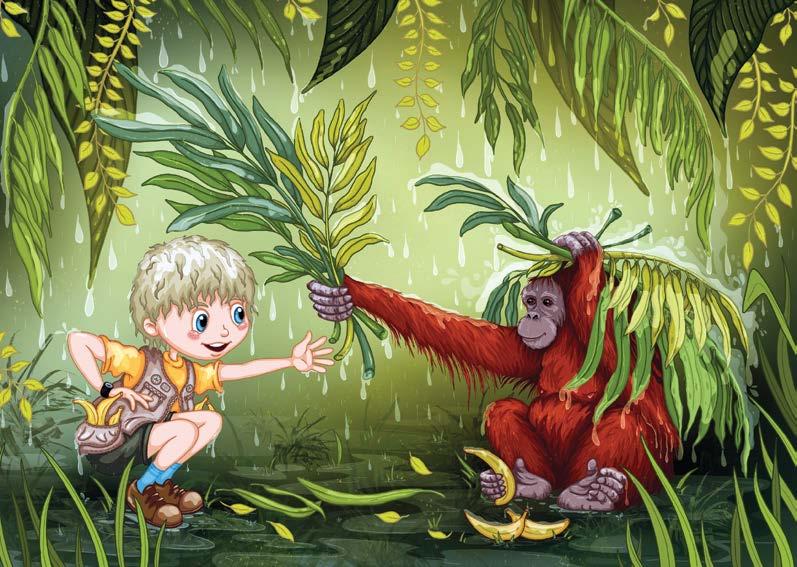
Charlie: I’m on the island of Borneo, looking for an orangutan. I’ve heard they’re great at making things. But this place is really wet – a tropical rainforest!

Orangutan: Do you want a rainhat?
Charlie: Wow, an orangutan. That’s a great one you’re wearing.
Orangutan: The leaves here are perfect for making rainhats and umbrellas. I’ll make you one, too.
Charlie: Thanks – I’ll pay you in bananas. Are they all you make?
Orangutan: Oh, I make much bigger and better things than that, human boy. I’m a builder.
Charlie: What do you build?
Orangutan: I’ll tell you for another banana.
Charlie: Here you go.
Orangutan: Thanks. Yum yum. Here, you can have the peel back. I build…
Charlie: Yes?
Orangutan: I build… Wait for it…
Charlie: Yes?
Orangutan: Nests!
Charlie: Nests?
Orangutan: Yes – up in the trees!
Charlie: You don’t think you’re a bird, do you?
Orangutan: Of course not. We make nests, too – and much bigger and better ones than theirs.
Charlie: And do you live in them?
Orangutan: We rest in them. And they’re great for curling up and sleeping in at night. Much comfier than a branch.
Charlie: I’d like to see yours.
Orangutan: It’s waaaaay up high in the canopy.
Charlie: That’s the top layer, where all the branches and leaves overlap, isn’t it?
Orangutan: Yes, it’s like a different world up there, you know, full of life – and nests.
Charlie: I’ve always wanted to explore a rainforest canopy.

Orangutan: Your arms don’t look as good as mine for swinging from branch to branch.
Charlie: No, they are a bit shorter.
Orangutan: Well, for another banana, I’ll pull you up there – by your arm or your leg. You can choose.
Charlie: No, thanks.
Orangutan: Half a banana, then.
Charlie: It’s not that – I wouldn’t feel safe. Why build your nests so high?
Orangutan: There’s less chance of getting bitten by pesky mosquitoes when you go very high.
Charlie: It sounds amazing.
Orangutan: I even built a secondary bed –right over the main one.
Charlie: A spare bedroom!
Orangutan: Exactly. So you could come for a sleepover.
Charlie: I’d love to sleep in an orangutan nest – but I toss and turn a lot. I’d better not risk falling out of a very high tree.
Orangutan: Not to worry. We orangutans prefer to be alone, anyway.
Charlie: It must have taken ages to build. Orangutan: Not at all.
Charlie: But birds can take up to a couple of weeks to build their little nests. I see them out searching for twigs and grass and leaves…
Orangutan: That’s their problem. I spend most of my time in the trees, and just use the branches around me.
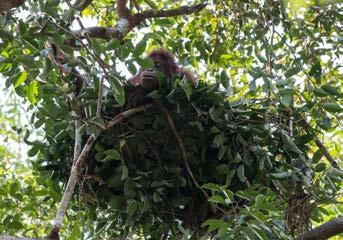
Charlie: So, you’re a fast builder?
Orangutan: I usually build a new nest every day. And I hardly ever reuse them. So, if you ever find one I’ve left behind, you can have it…
Charlie: And what’s your nest like?
Orangutan: I’ll tell you for…
Charlie: I know – another banana. Go on, then.
Orangutan: Thanks, human boy. Well, I used thick branches for the main structure. Then, I clumped together small leafy branches for a mattress. Next, I weaved together some long, thin branches to make a blanket, a pillow and a roof.
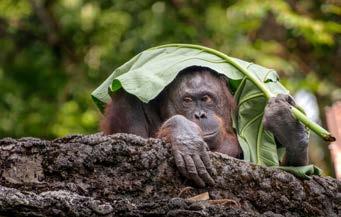
Charlie: Oh, thanks.
Orangutan: …if you give me another banana.
Orangutans can live for well over 30 years – so each one might build over 10,000 nests!
This critically endangered cutie must be one of the best builders in all of Australia!
With its powerful, muscular legs and long, strong claws, the northern hairynosed wombat is perfectly adapted for burrow building.
Wombat burrows can be HUGE, with multiple entrances and over 90 metres of tunnels (that’s about the same length as a football field!). And whether the air above is scorching hot or freezing cold, these burrows stay at a perfectly comfortable temperature.
It’s no wonder that wombats spend most of their time in their underground palaces, popping to the surface for just a few hours a night to snack on grass.
Other animals use wombat burrows for shelter, too, including wallabies, snakes and echidnas
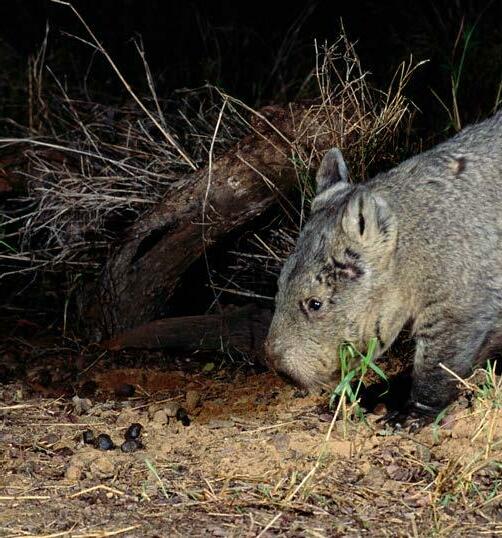
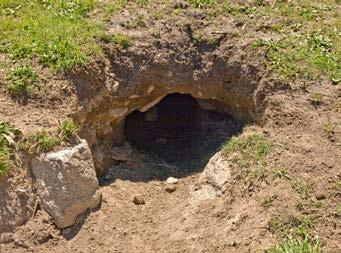
There are three types of wombat, and all live in Australia:
• Northern hairy-nosed wombat: The rarest species, found only in woodland and grassland in the northern state of Queensland. It’s also the largest, measuring about one metre long and weighing over 30kg.
• Southern hairy-nosed wombat: The smallest species, found mainly in South Australia.
• Common wombat: The most widespread species. Unlike its cousins, it has a hairless hooter, hence its other name – the bare-nosed wombat!
Northern hairy-nosed wombats sleep for up to 18 hours a day – and they snore!
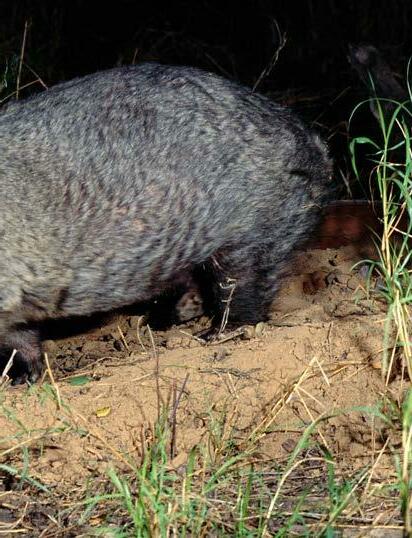
Wombats are marsupials. Like many marsupials, including kangaroos and koalas, they have pouches to keep their tiny babies (called joeys) safe for the first few months of their lives.
A female wombat’s pouch faces backwards, so the joey looks a bit like it’s peeping out of Mum’s bum! This is so Mum doesn’t fling dirt all over her baby as she’s digging.
Northern hairynosed wombats were once found across eastern Australia, but by the 1980s, there were only 35 left in just one area: Epping Forest National Park. How had the situation got so bad?
It was probably down to a lack of grass. Wombats need plenty of the green stuff to survive (it’s pretty much all they eat!) but they faced competition from munching cows, sheep and rabbits.
To pull the wombats back from the brink of extinction, cattle were removed from the park, and food and water stations were set up. A 20-kilometre fence was also built to keep out predators, such as dingoes.
Conservationists knew they needed to do more. If fire or disease swept through Epping Forest, every single northern hairy-nosed wombat could be lost! So, in 2009-2010, 15 wombats were flown hundreds of kilometres south to a new home, the Richard Underwood Nature Refuge.
The refuge was all ready for them, complete with man-made burrows for the wombats to move straight into. But the wombats soon put their own stamp on these basic burrows, digging new entrances and chambers to turn them into marsupial mansions!
There are now over 300 northern hairynosed wombats, and conservationists are on the hunt for a third area for these burrowing beauties to call home.

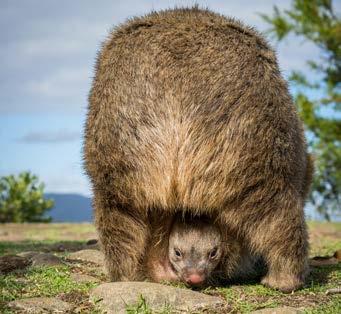
The brink of extinction: Nearly extinct.
Dr Helen Smith helped to save one of Britain’s rarest spider species from extinction. She reared thousands of fen raft spiderlings in her kitchen! The spiders were released into the wild, where they now thrive.

Maahi: What inspired you to start helping raft spiders?
I’ve always loved wildlife. I started off doing research as a botanist – spiders came later and rather by accident. I moved house to live on the edge of Redgrave and Lopham Fens nature reserve. This was home to rare fen raft spiders. I got involved with conservation work for my new neighbours because their numbers were dangerously low. Their beautifully adapted way of life fascinated me. I want to do everything possible to ensure this very rare species has a safe future.
Scarlet: How do you look after raft spiderlings?
The spiderlings all get on well together for the first week or so of life, when they’re in their nursery web. After that, if still kept close together, they can start to eat each other.
Each spider was reared separately in a small test tube. There is damp cotton wool at the bottom, a perch and a frequent supply of food.
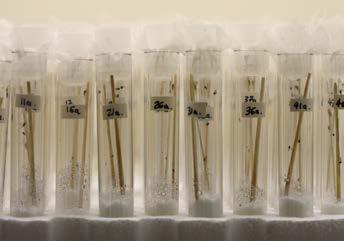
The most challenging bit is getting live food (and it does have to be live) into small test tubes. Especially without the very active little spiders inside escaping!
Many of the tiny spiderlings eat fruit flies, which I was able to collect from my compost heaps and wormery. Some needed even smaller flies. The best source of these was fresh pony dung, so I spent a lot of time with a sweep net, following ponies!
For the first year, I reared the spiderlings in my kitchen. After that, I had help from the brilliant staff and volunteers from zoos across the country.
Helen’s kitchen maternity ward
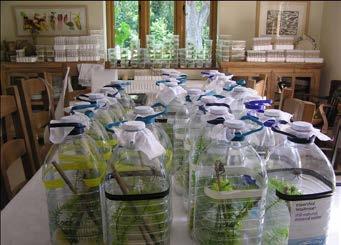
Lyra: How many spiderlings did you release?
We released over 30,000 spiderlings in the Norfolk and Suffolk Broads. The sites were not far from the natural population at Redgrave and Lopham Fen. Around 6,000 of these were reared in individual test tubes. The others were released when they were much younger, with their mums and siblings. They were in nursery webs built inside plastic water bottles.
Carrie: Do raft spiders actually make rafts?
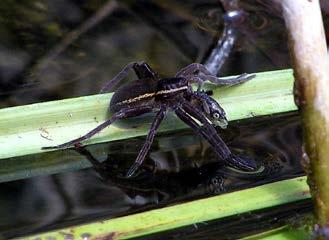
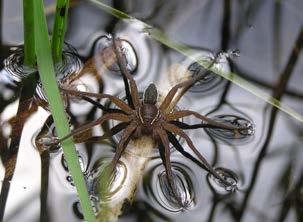
No – although when they sit on floating leaves to bask or hunt, these effectively become rafts. A Victorian naturalist came up with the name. He thought they may be using silk to deliberately create a raft. The spiders are raft-like when they rest on the water’s surface. They stretch out their legs to spread their weight.
Belle: Are they doing OK in their new home?
The spiders are doing really well. We counted nursery webs in summer 2022. We estimate the spiders now occupy ditches across at least 550 hectares of marshland. That’s an area bigger than 900 football pitches!
Moving the spiders to new sites makes them much less vulnerable to extinction. Fire, saltwater flooding or drought at any of the sites could result in their loss. But with seven sites rather than three, they are now much safer.
Rais: How do they catch their prey if they don't use webs?
Like many spiders, they are sitand-wait hunters. They rush out from their hunting perches to grab passing prey. They hunt mostly on the water’s surface but can also catch prey underwater and on dry land. Sometimes they even eat small fish.
The spiders have a brilliant early warning system. They have long, very sensitive hairs and sensory slits in their cuticles . This helps them to detect the direction, distance and speed of passing animals. They sense vibrations in the air and water. This is more important than visual signals for catching prey and avoiding predators.
Willow: Why are they so rare?
These spiders have quite specific habitat requirements. They rely on a supply of clean water, usually in lowland areas. There must be suitable vegetation growing at the edge of the water to support nursery webs.
Lowland wetlands in Britain have suffered bigger losses than almost any other habitat. This is mostly as a result of drainage for farm crops and public water. Thanks to the work of conservationists, the spiders had a helping hand to find suitable new homes. Organisations such as the Wildlife Trusts have restored large areas of damaged wetlands. They are rich and special places for wildlife once again.
Ilyas: How big is a raft spider?
Like us, they start small! Newly emerged spiderlings are less than 2mm long. Adult females can be up to 23mm long – or around 7cm if you include their leg span. They are one of the biggest spiders in Britain.
Nunu: Could a raft spider bite you?
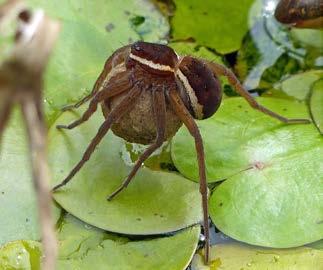
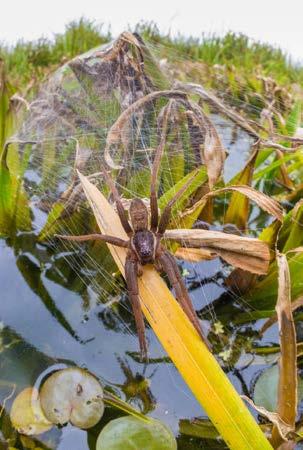
Only a handful of Britain’s spiders can nip humans and only in self-defence. Adult fen raft spiders could certainly give a nip. But in 30 years of working with them and often handling them, I have never been bitten.
See http://dolomedes.org.uk and http://suffolkwildlifetrust.org/ fenraftspider to find out more.
Cuticle: The outer layer of skin. Drainage: The system of water flowing away from somewhere, usually down pipes.
Rear: To care for young animals.
Images are courtesy of Dr Helen Smith Fen raft spider guarding nursery web Spider mum with an egg sacTrees and shrubs seem to glisten with silken webs at this time of year. This pretty project was inspired by webs filled with dew.
It is a great way to use up leftover scraps of material, spare beads and trimmings. Choose bits and pieces in complementary colours and weave them together to make a wonderful web.
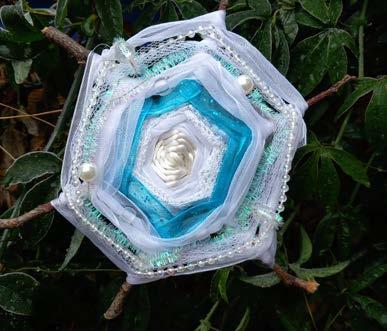
• Three straight-ish thin twigs
• Scraps of material, ribbon, lace, yarn and so on in wintry colours


1. Snap the twigs to equal lengths of approximately 20cm each. Ask an adult to help if they are tough.
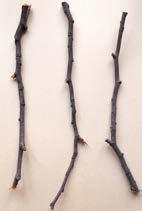
2. Arrange the twigs in a star shape. Wind some yarn tightly around the centre to hold the twigs in place.
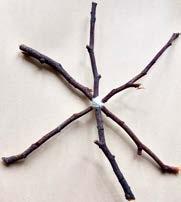
3. Use some yarn or cord to weave the centre of the web. Loop the cord around each twig as shown.

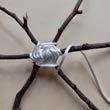
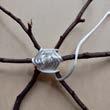
Decide on a colour scheme and raid your scraps box for material and trimmings that complement each other.
4. Add some beads to look like drops of dew. You can thread them as you go or slide them on to to pipe cleaners and add them at the end.
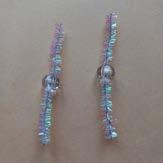
5. Carefully wind the scraps of material, string, ribbon, wool or lace around the twigs. Make sure you tie the ends of each piece securely as you go so the web doesn’t unravel.
Hang up your web for some winter sparkle!
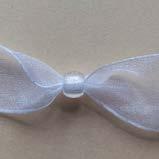 Craft by Daisy Fox
Craft by Daisy Fox
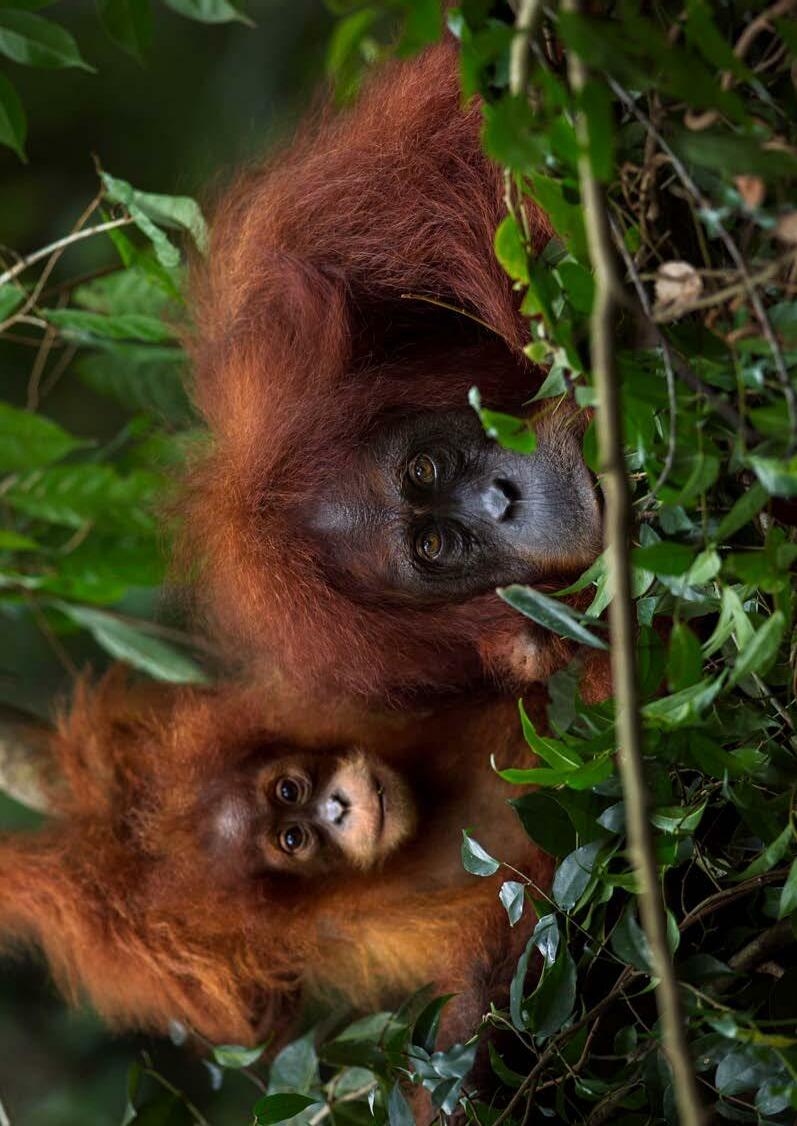 © Nature Picture Library/Alamy Stock Photo
© Nature Picture Library/Alamy Stock Photo
After reading this newsletter, Rusty borrowed my phone to take his own ‘wildlife’ photos. He took zillions of snaps of his model dinosaurs!

And don’t forget about me – Rusty!
Some people can’t even remember last night. That’s when my annoying little brother Rusty promised he’d take out the recycling bins this morning. Did he? No, he slept in, so I had to. “I forgot,” he said. Pah!
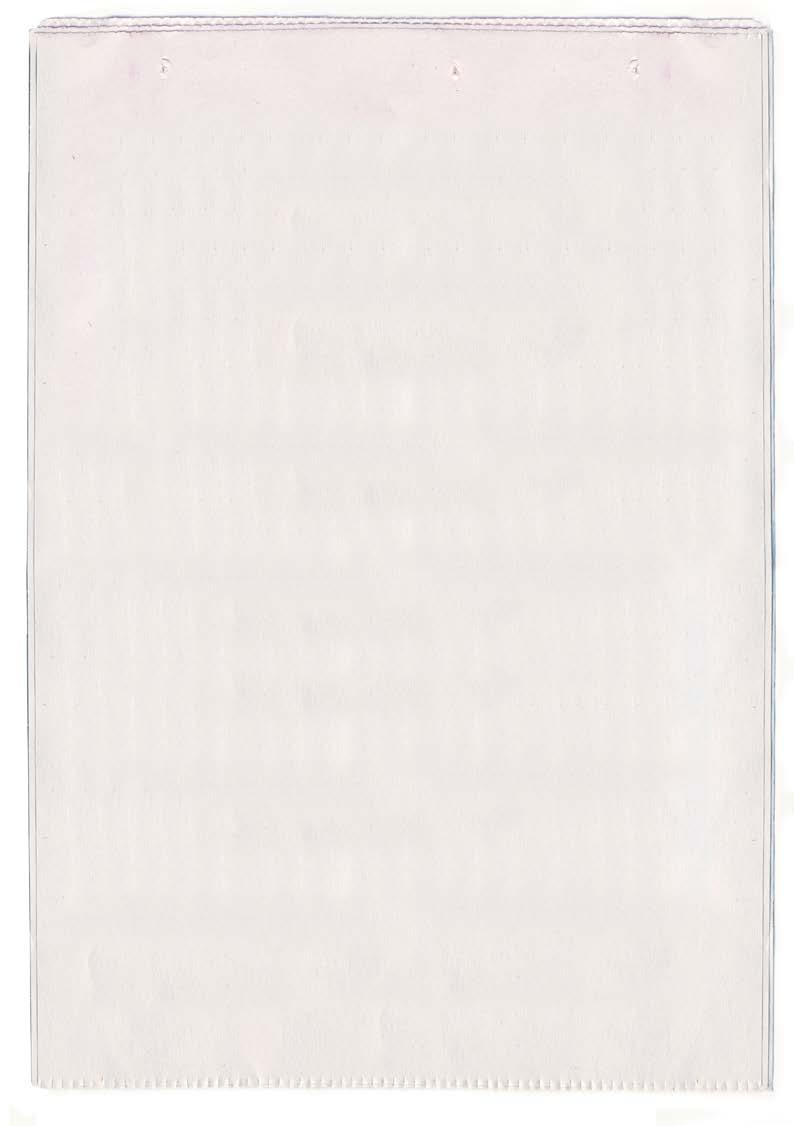
But I bet your memories stretch all the way back to last month when I reported on the world’s funniest and most popular photography competition, The Comedy Wildlife Photography Awards. Now I can show you the winners!
The overall winner – out of 5,000 entries – is Jennifer Hadley’s photo ‘Not So Cat-Like Reflexes’. Taken in the Serengeti, Tanzania, it shows a lion cub trying to come down from a tree, possibly for the first time. He went for it but lost his grip. Don’t worry, the tree trunk tumbler righted himself mid-fall, landed on all four paws, and was completely unharmed. Our cat Luke Skywhisker once fell out of a tree and landed on Rusty’s head. That image would win a Comedy award!

Jennifer also won the People’s Choice Award, voted for by the public. Her photo ‘Talk to the Fin!’, taken on the Falkland Islands, shows one penguin seeming to snub his mate. He’s not really in a strop – he’s probably just trying to balance.
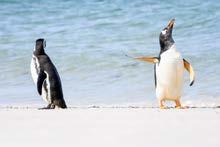
Watch out, heron! Jean Jacques Alcalay’s photo won the Spectrum Photo Creatures of the Air Award. He took it in Kruger National Park, South Africa.
But fear not, bird fans! That hippo is just yawning next to a heron who’s standing on the back of another hippo.
That penguin reminds me of you when you got in a huff about me forgetting to put the bins out, Rhona!
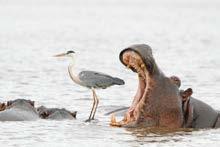 © Jennifer Hadley/Comedy Wildlife 2022
Rusty
© Jennifer Hadley/Comedy Wildlife 2022
© Jean Jacques/Comedy Wildlife 2022
© Jennifer Hadley/Comedy Wildlife 2022
Rusty
© Jennifer Hadley/Comedy Wildlife 2022
© Jean Jacques/Comedy Wildlife 2022
On 16th December, one of the world’s most endangered animals, a mountain bongo antelope, busted out of San Diego Zoo and ran free for about 40 minutes!
For the last 9,000 years, American black bears’ coats have been slowly turning redder!
The Creatures Under the Water Award went to this photo called ‘Say Cheeeese!’ Arturo Telle Thiemann took it in the Azores, Portugal. It shows a couple of triggerfish that swam over for an extreme close-up.

“Even though they may look funny,” Arturo says, “these fish can be quite aggressive.” Luckily, they didn’t try to bite him,
although his camera ended up with some scratches!
A huge walrus, nicknamed Thor, turned up on a beach in Hampshire, England, resting after travelling from the Netherlands and France.
NEWSFLASH!
Finally, here’s the Junior winner. Fourteen-year-old Arshdeep Singh snapped this photo of a spotted owl winking at him from what may be a pipe nest in a small town named Bikaner in India. He called it ‘ICU Boy!’
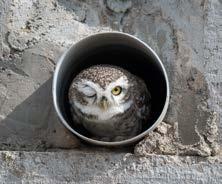
But the competition isn’t just to make us smile. It also aims to highlight the important message of wildlife conservation in a positive way!

A new fossil discovery suggests that reptiles have been around for 35 million years longer than we thought!
After being lost for 85 years, the remains of the last known Tasmanian tiger turned up in an Australian museum’s cupboard!
Another wildlife photography competition has announced its winners! This time it’s the RSPCA Young Photographer Awards 2022.
The winner was 17-yearold Ben Harrott from Oldham, beating 4,000 other entries. He snapped this shy mountain hare at sunset.
The photo shows us something about climate change. Mountain hares usually have white winter coats for hiding against the snow.
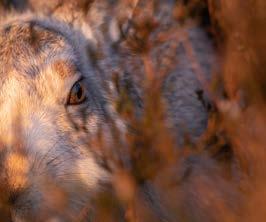 © Arturo Telle/Comedy Wildlife 2022
© Arshdeep Singh/Comedy Wildlife 2022
© Ben Harrott
© Arturo Telle/Comedy Wildlife 2022
© Arshdeep Singh/Comedy Wildlife 2022
© Ben Harrott
Warmer winters and less snow make hiding harder for them. Here, the low sun gives the hare’s white fur a golden appearance. But he’s still trying to hide as best he can!

The RSPCA received a record 17,000 complaints this year about the TV show I’m A Celebrity Get Me Out of Here’s treatment of animals! NEWSFLASH!
A study revealed that the number of UK earthworms may have decreased by one third in the past 25 years. They need lots of topquality soil!
The youngest winner was in the Pet Portrait category. Seven-yearold Jamie Smart from Powys took this great photo of Fighter, the Barnevelder cockerel!

And how about this great Small World category winner by 18-year-old Ben Hancock-Smith from Surrey? Rusty sometimes tries to ride on my back like that small fly!
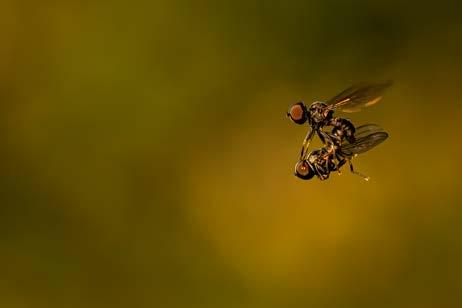
I’m going to end 2022 and start 2023 with good news! Firstly, in Australia, several endangered marsupials have started to recover. These include golden bandicoots. These gorgeous little mammals are rapidly recovering in New South Wales after becoming extinct there before. Go, bandicoots!
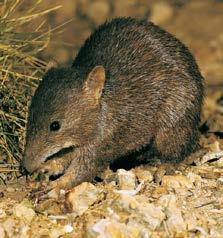
And there’s more. Explorers discovered
dozens of weird, wonderful and wiggly deep-sea fish we never knew existed around Australia’s ancient underwater volcanoes. What’s more, in Cambodia, Siamese crocodiles – one of the world’s rarest crocodiles – are bouncing back. You see, things can get better.
Now get ready for what might be the best news of all. COP15 took place in Montreal, Canada. It’s the two-week meeting where countries come together to ensure the survival of species and stop ecosystems around the world from collapsing. The nations agreed to protect a third of the planet for nature by 2030! There are targets for protecting rainforests, wetlands and other vital ecosystems. But they didn’t achieve the targets they promised at the last COP, so I reckon we Eco Kids need to keep an eye on them – and we will!
Oh no, I’ve just realised that I have to finish with bad news after all. I have to tell you that it’s time for Rusty’s page!
© Jamie SmartHi, Rusty fans!
Well, we’ve had another year of great reporting. But I worked out that my annoying sister Rhona gets to write 33 pages of reports a year – and I only get 11. I bet Eco Kids Planet would have a million more readers if it were the other way around!


Anyway, Rhona gets the first three pages, so she reckons she can nab all the best stories. But I always get better ones – and this time I’m reporting on robot bees! What could bee better than that?
(I tried that joke out on Luke Skywhisker. I think he laughed.)
But I’m not talking about Invasion of the Robot Bees, the first movie I’ll make when I’m a top Hollywood director. I’m talking about real-life robot bees!
Scientists at the University of Maryland, USA, are experimenting with tiny bee-like drones. They have two cameras for all-round vision and an onboard
computer to control them. One day they may be able to back up real honeybees and other pollinators. They could also check bridges for cracks and stuff like that.
Insects spread pollen for many of the world’s food crops, so new plants can grow. But their numbers keep falling due to things like pesticides, global warming and air pollution. Boo!
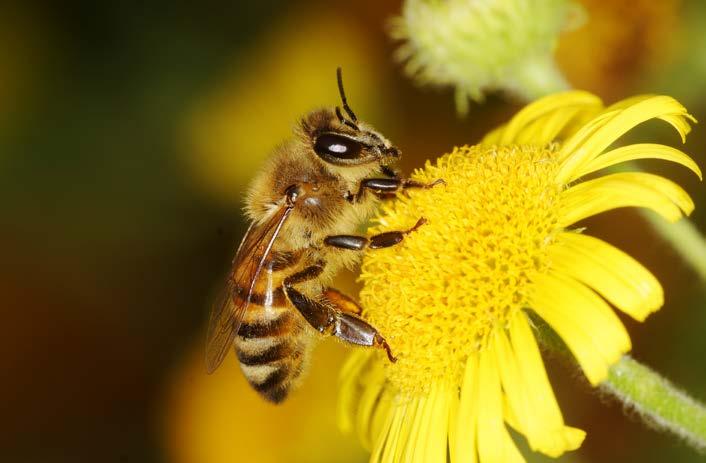
One day, robot bees may help them to spread pollen from flower to flower. Also, they won’t sting you if accidentally sit on them –I think!
RustyMaybe one could be programmed to keep an eye on YOU, Rusty!
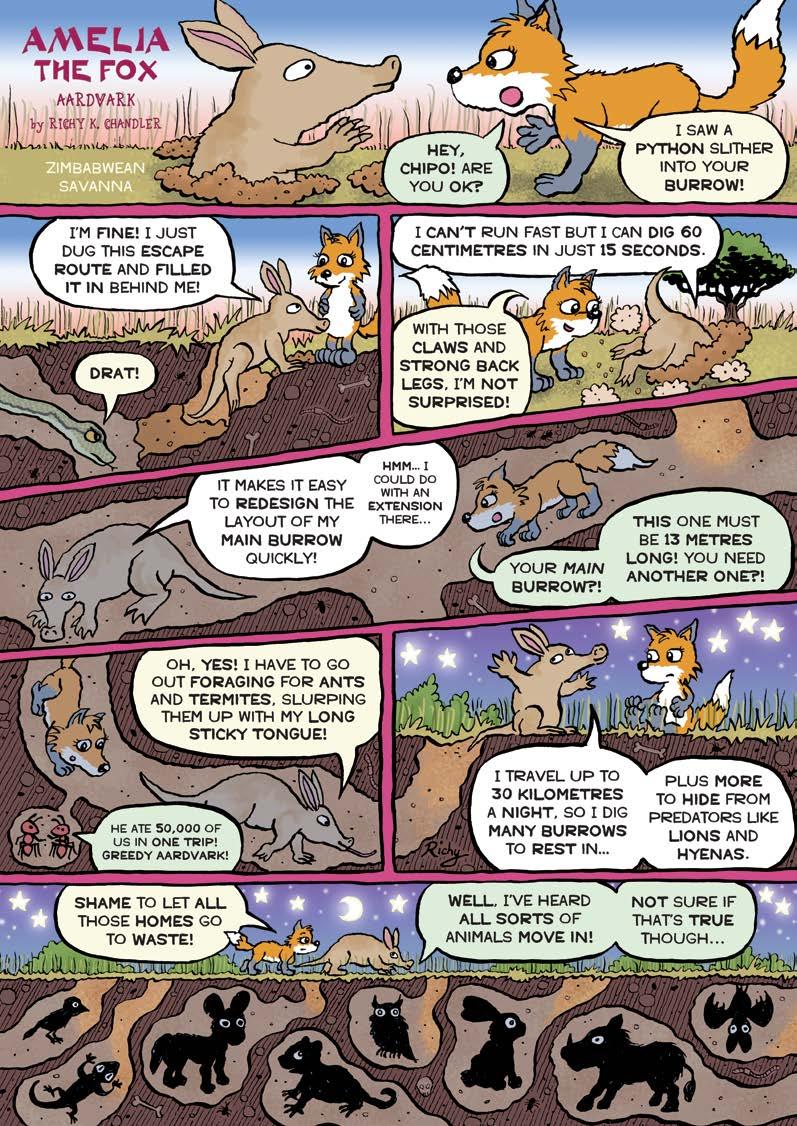
Hello, my fellow busy Eco Kid bees, Amy here!
Ever wondered where the expression “busy bee” comes from? Well, it’s easy to guess the answer! If there’s one thing we know, it’s that bees are busy. Always buzzing around collecting pollen and nectar. Some work hard to turn nectar into honey, others use it to feed themselves and their larvae. And many are magnificent nest-builders, the greatest of which, perhaps, is the…

The most intriguing and famous bee builder is the honeybee.
Honeybees are eusocial, meaning they live in a colony. And like all colonies, survival means top teamwork. They act as a collective; almost like a single organism. Each bee knows its role and what it must do to ensure the success of the whole.
Honey is the gloriously sticky sweetness that comes from a perfect partnership between bee
and bloom. And to store this most magical of elixirs, honeybees use one of the most awesome architectural designs in nature!
First the honeybees must find a good location: the hollow of a tree is perfect – or an artificial hive, of course. There they settle and build their nest. Whether natural or in a human-made hive, the structure of the honeybee’s build is the same. They create thousands of wax hexagon cells that fit tightly together, side by side. This mass of cells is called a honeycomb.
Being so very busy and brilliant, they make it themselves! Young bees have special glands on their abdomens that produce wax. They chew to soften and shape it into exactly the right size, using their mouth to measure out each hexagonal. And they keep going, busily building, making, chewing and creating these beautiful waxy cells to house the
expanding colony. Some are the perfect shape and size for a growing grub. Others are made with the minimum amount of wax for maximum honey storage.
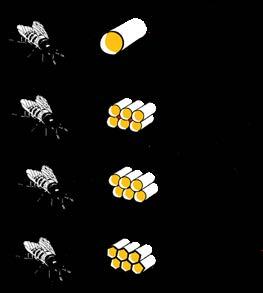
Having so many busy inhabitants, hives get hot. The heat is useful for keeping the wax pliable. But if things get too warm, the bees flutter their wings to cool things down.

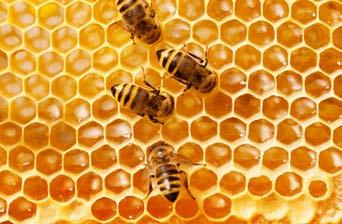
In 2020, scientists discovered that Asian honeybees smear buffalo – and other types of animal – poo around the entrance to their hives.
To keep bee-murdering, homewrecking hornets away! But bees are notoriously CLEAN – so using something as dirty as poo is curious. Scientists aren’t exactly sure how it works, but work it does. It seems these honeybees have simply figured out the quickest and best way to protect their homes from hornet attacks.
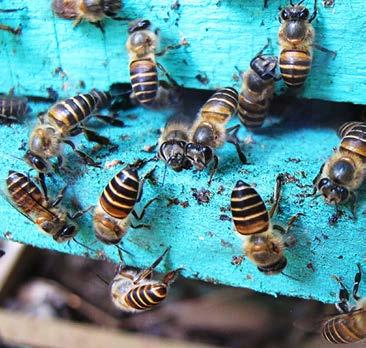
The hexagon is a popular shape in nature because it’s super-efficient. Some wasp species use hexagons in their nest building, too. They make theirs not from wax but paper. I found an abandoned wasp nest once and it was a light, exquisite thing! But the hexagon shape is also strong and secure.
Once a layer of cells has been filled with honey, the bees seal it with wax and begin the next layer in a slightly different position. Building layers a bit out of line like this creates a stronger structure. And a stronger structure means a safer home for the bees, as well as excellent honey storage!
Elixir: A liquid with magical powers to cure or improve something. Pliable: Able to bend easily without breaking.
They find a dark, dry space – a warm, sheltered spot in a garden or under a shed. Tree bumblebees prefer high spaces, such as an empty bird box –maybe even a loft.
After a winter hibernating underground, the queen starts house-hunting. Bumblebees build a fresh nest every year, so each year the queen must find a new spot.
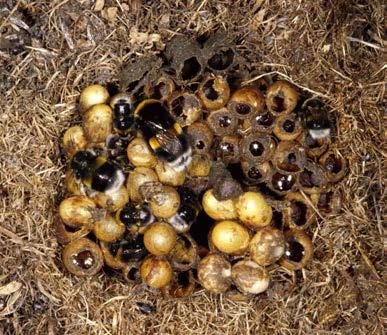
Once she’s chosen, she gets building. Bumbles don’t use hexagons. Instead, the queen builds a little wax cup. She fills this with nectar (for herself). Then she builds another wax cell, puts pollen in, and lays her eggs on top of it. Then worker bumblebees build more cells to increase the nest size.
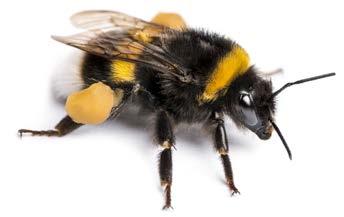
Bumbles can live in groups of up to 400, which, compared to a honeybee hive of 50,000, is tiny. And their nests are VERY different…
No disrespect to the humble bumble, but their building skills are nowhere near as neat or organised as those of the honeybee.
Their nests are shambolic-looking, like a mucky clump of crunchy cereal! But hey, they do the job, and that’s really all that matters!
Amazingly, around 90% of the world’s bees are solitary. This means they live alone, rather than in colonies like honeybees and bumbles.
Most solitary bees are ground nesters. They use soil to build. Dry, sandy, rocky – whatever suits the species. Bees that nest in the ground sometimes build close to one another. They form groups of nests called aggregations and these can be vast. Around 100,000 individual nests is usual, but the biggest group ever found was built by the hairy-legged bee. It contained over 12 million nests!
Mining bees like to dig their nests in a lawn. You may have noticed their tiny, dust-surrounded holes.
Leaf-cutting bees build in natural hollows, like a plant stem. Or they tunnel into rotten wood or dry soil. They line this with
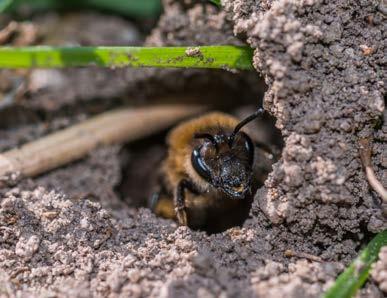
Did you know that bumblebees build nests, too? (I didn’t!)
There's no place like home…
leaf pieces to form a tiny cup, filling it with nectar and pollen. Then the female lays a single egg and seals the top with more leaf bits. A nest can contain around 20 of these egg-filled leaf thimbles!
Some bees build free-standing nests from all kinds of materials. A species of African
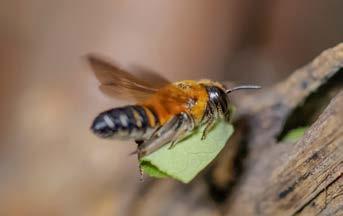

bee uses plant fibre, animal fur and bird feathers attached to a plant stem. There are bees that prefer to live in preexisting shelters – no building skills required! They include species like the red-tailed mason bee, which calls an empty snail shell home.
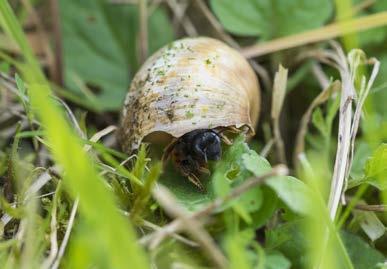

And cuckoo bees – like cuckoo birds – lay their eggs in other bees’ nests!
Shambolic: Confused and badly organised.
I used to think all bird nests were bowlshaped collections of grass, straw and twigs. When I heard they come in many weird shapes and sizes, I just had to investigate…
Who put a haystack up that telephone pole? It’s actually a hive of nests built by African sociable weaver birds for their young. Hundreds might live in there.
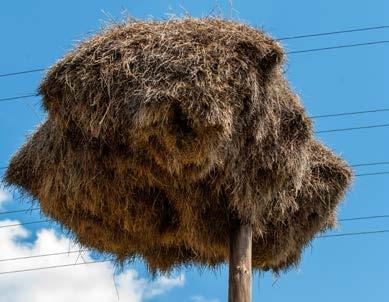
That bird’s name is pronounced “so-sha-bull wee-ver”.

Burrowing owls decorate their nests with clods of cow and horse poo!
South America’s rufous hornero birds build oven-like nests out of mud. Despite the time and trouble they take, the birds hardly ever reuse them. Sometimes they build a new nest on top of the old one, so you may find several stacked on top of each other!
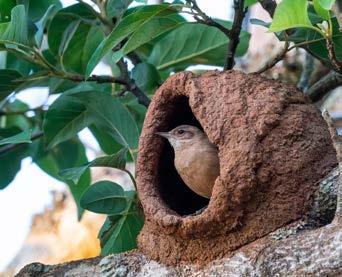
And that’s not just a mucky mud mound, it’s a flamingo nest. The males and females make it with their big bills. The female lays just one egg in a hole at the top.
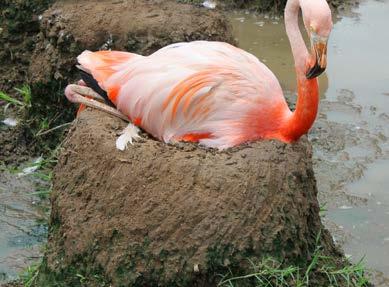
parts and spiderwebs
Many birds use cobwebs to help with nestbuilding. You may see them out collecting spider silk – and now you know why. Not only do they steal the spiders’ homes, but they also eat the spider if they can!
Some birds have no time for nests. White terns, for example, lay their eggs on bare, thin tree branches!
Nests or sacks? One hundred hanging nests of oropendola birds may dangle from the branches of a single tree in tropical forests. Only the female weaves them – for her two eggs and the hatchlings. (Imagine trying to build one of those yourself with no hands!)
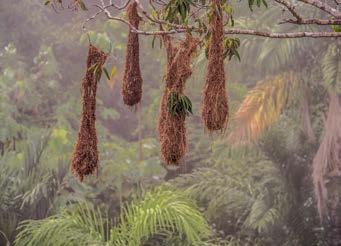
Adult birds don’t poo in their nests, but what about their flightless babies? Well, when most baby birds poo, it comes out into little poo bags called faecal sacs. These are easy for a parent to take away – although they sometimes eats them!
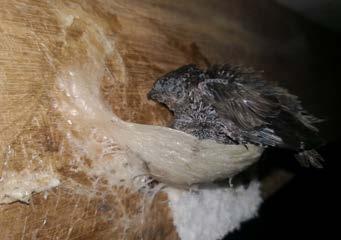
In Issue 89, Charlie travelled to Southeast Asia to meet a swiftlet. He discovered that they build their teacup-like nests out of sticky, gooey spit, which they drool out over a month, using it like cement.
Birds sleep in their cosy nests at night. Say your answer, then check right.
Bowerbirds of New Guinea and Australia may be the most incredible bird builders. Males build and carefully arrange structures like this nice, shady path between walls of sticks. They also decorate around them with pebbles, shells, bottle tops and whatever colourful objects they can find – or pinch. But they’re the odd ones out here. These aren’t nests – the male builds them just to attract a female. The nest she builds for their eggs later will be a simple twiggy one!
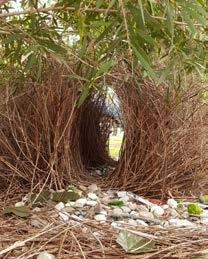
else to sleep.
False – most adult birds rarely do. Nests are for their eggs and babies, so they find somewhere
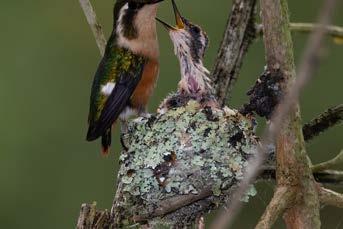 Woodstar hummingbirds use mostly plant
to build their nests.
Woodstar hummingbirds use mostly plant
to build their nests.
Many animals are incredible home builders, but would any of their homes suit you? Pick which of these descriptions sounds like the home you’d most like to live in, then turn to page 34. You’ll discover which animal-built home you’ll be moving into – and which animal you’ll be sharing it with! But, hey, don’t turn the page until you’ve picked one or you may spoil the surprise.

AThis is a beautifully designed home made of strong material. You’ll get plenty of fresh air living here and many visitors who’ll stick around for dinner.
This well-made home is surrounded by amazing wildlife. It has a secret entrance, so nobody will see you come and go, and a food store. There’s also a cosy sleeping area – but you need to be a good swimmer to live here.
BThis home has towering chimneys, and the air inside is always fresh and cool. There’s an indoor garden, food stores and a deep cellar down below.
DYou’ll be warm and snuggly over winter in this very clean home, which always has plenty to eat – ideal if you have a sweet tooth. You may have to nurse some babies and help with other tasks to live here.
This is a well-designed, attractive home, which may even come with decorations. You might find the entrance a little small to squeeze through, but it’s cosy and pretty safe inside. You’ll be sharing this home with children.
Pick this clean home if you’d like to live somewhere with lots of long hallways to wander down and explore. You’ll find many chambers –some full of kids – and food stores here. But you’ll be given a job and will have to work hard if you want to stay.

IThis home may suit you if you like to be surrounded by water. It’s full of fresh air and surrounded by plants.
This cosy home was built for protection and should be very comfy. There’s plenty of silk inside to snuggle up and sleep in – but not much space.
HWould you like to live in a forest? This high home is long and narrow with warm inner chambers to hang around in. It may be one of 30 or 40 homes in the same place, so you won’t get lonely – at first. Everyone else might leave after a couple of weeks.
JYou may find a ‘mattress’, a ‘pillow’, ‘blankets’ and a roof in this cosy home – all made from plant materials. You’ll need a head for heights to live here and will have the place all to yourself after a day or so.
Have you chosen? Now turn to page 34…
Down:
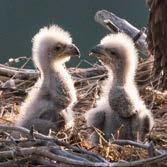
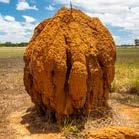
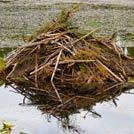
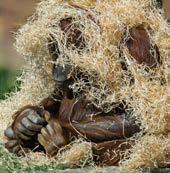
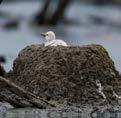
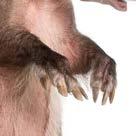

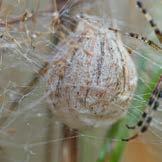
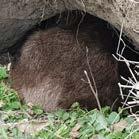

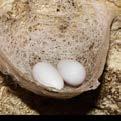
Honeybee is back from a meadow with some nectar. Help her to find the correct way to get to the middle chamber.
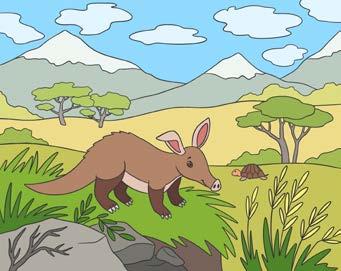
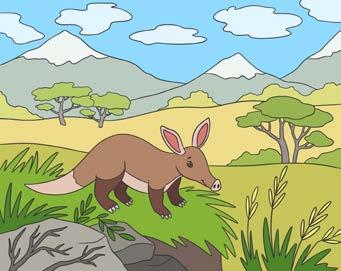
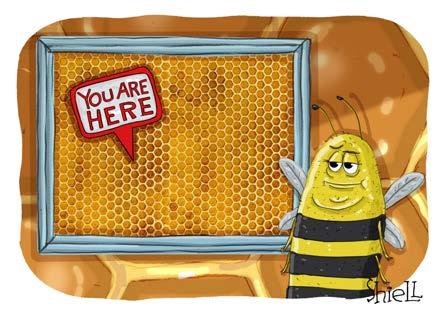

In November’s “Nature’s Power” issue, we asked you to write a poem about a powerful natural event. Thank you to everyone who sent us their entries. We were blown away by your beautiful words and rhymes!
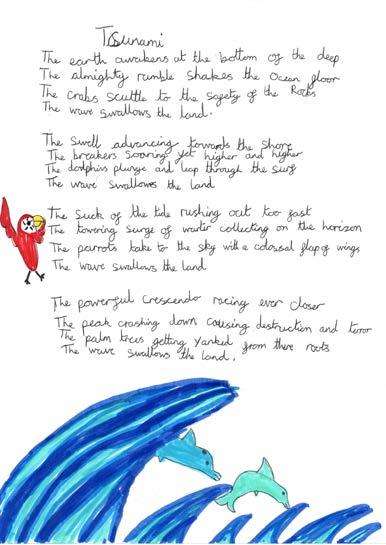

Seren, aged 10, Newquay
The ground shakes, The wind is strong, The waves soar high, Like mountains in the sea.
Be careful of the surface, My little calf, Be careful where you swim, Do not dare to swim up.
Up to where the waves crash, Up to where you hear the wind dash. We have to swim up, Just once or twice for air, But trust me, my darling, It’s not safe up there.
Try to stay under, Protected by the sea, Otherwise, you’ll get pushed by the waves, Like that lovely tree.
Hurricanes are more dangerous On land than in the sea, But it’s still important, baby, That you stay close to me.
Emma, aged 10, Harrow
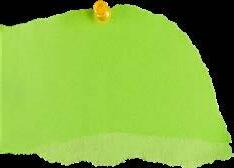
Chloe, aged 10, Sheffield
The Forest is silent, nothing makes a sound, Then in a flash, lightening hits the ground! A shower of sparks is sent flying, Animals are running with the fear of dying.
The sparks get caught on a bush, setting it aflame, And just then the wind came, Swirling, whirling through the fire, The flames reaching their ultimate desire.
For now they’ve become a roaring inferno
The animals all hide and stay low Very slowly, the fire begins to stop, The ashes all silently drop, Floating down all around, Hitting the ground without a sound.
Holy, aged 10, Maidenhead
Maahi, age 11, Northwood
I see smoke coming out of the top of the volcano. The landscape is dying as the ripples of the rock come falling down. Lava, red and orange, like blood.
It looks like orange juice, flowing down the volcano in layers, one on top of another.
I hear explosions: “Pow!” “Boom!”
It sounds like thunder.
I feel the shaking of trees about to die.
I smell smoke and dust, the clouds of ash. I wonder what will happen to the volcano after it’s erupted. Will it kill it, or will it make it even better?
Hannah, age Perranporth5,

To read more of our readers’ poems, go to www.ecokidsplanet.co.uk/nature-power-poem-competition

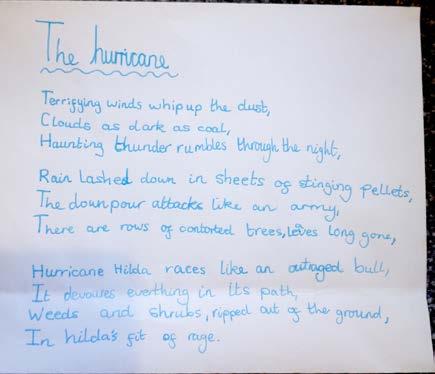 Runners-Up
Runners-Up

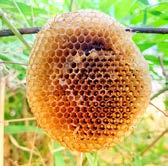
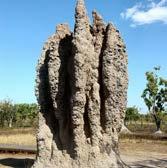

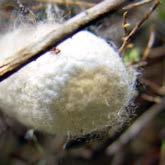
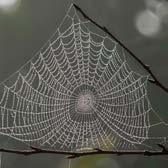




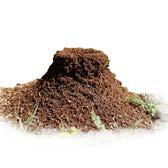

Were you surprised to find out what amazing building skills some animals have? We were! For this month’s competition, we’re asking you to send us a drawing of your favourite animal builder. What do they look like? What do they build? What materials do they use to construct their homes or nests?
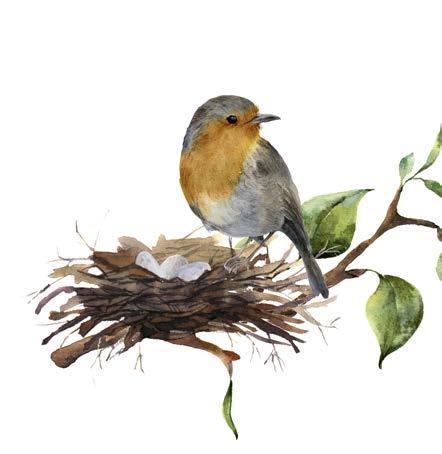
Send us your creations before 10th February 2023, and we’ll publish our favourites in the March 2023 issue of Eco Kids Planet. Plus...
Watch vibrant colours and patterns change before your eyes with Build Your Own’s new eco-friendly, STEMinspired kaleidoscope!
A planet-friendly take on a traditional kaleidoscope, this multi-functional kit provides hours of entertainment. Easy to assemble using slot-together techniques –there’s no glue, no mess, no fuss. Press out the pre-cut parts, build and you’re ready to go!
Slot in your choice of colourfully printed pattern disc, then twist and turn your kaleidoscope tube to create amazing displays! Or why not add your own finds? Bright flower petals, different shaped leaves or colourful beads will create a completely unique pattern.
You can also detach your kaleidoscope tube for onthe-go exploring! What patterns can you make on your travels? The possibilities are endless!
Made using 100% sustainable cardboard and paper.
Ages: 8+
RRP £19.99

See more eco-friendly builds at www.buildyourownkits.com.
How to submit your entries: Email a photo of your drawing to win@ecokidsplanet.co.uk, or send it to Eco Kids Planet, 41 Claremont Road, Barnet, EN4 0HR. Your entry must arrive before 10th February 2023. Make sure you include your full name, age and address, so we know how to reach you.
THREE lucky artists will win this exciting kaleidoscope from Build Your Own Kits.